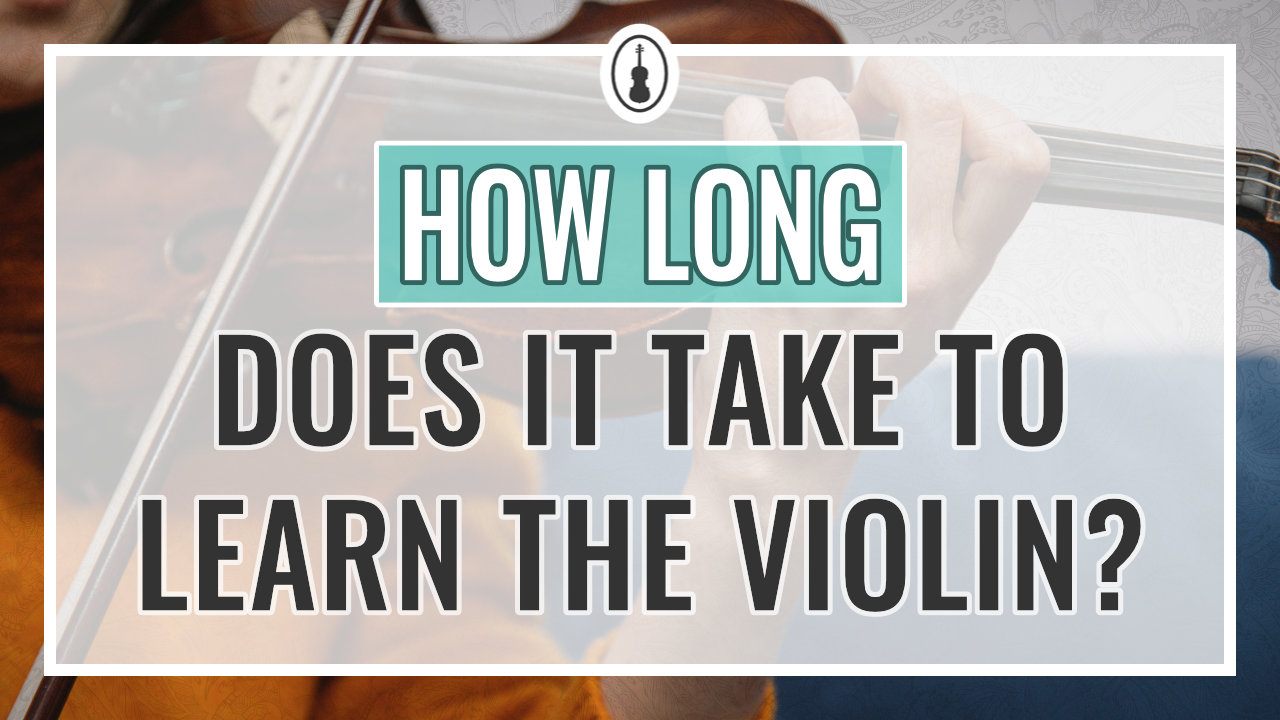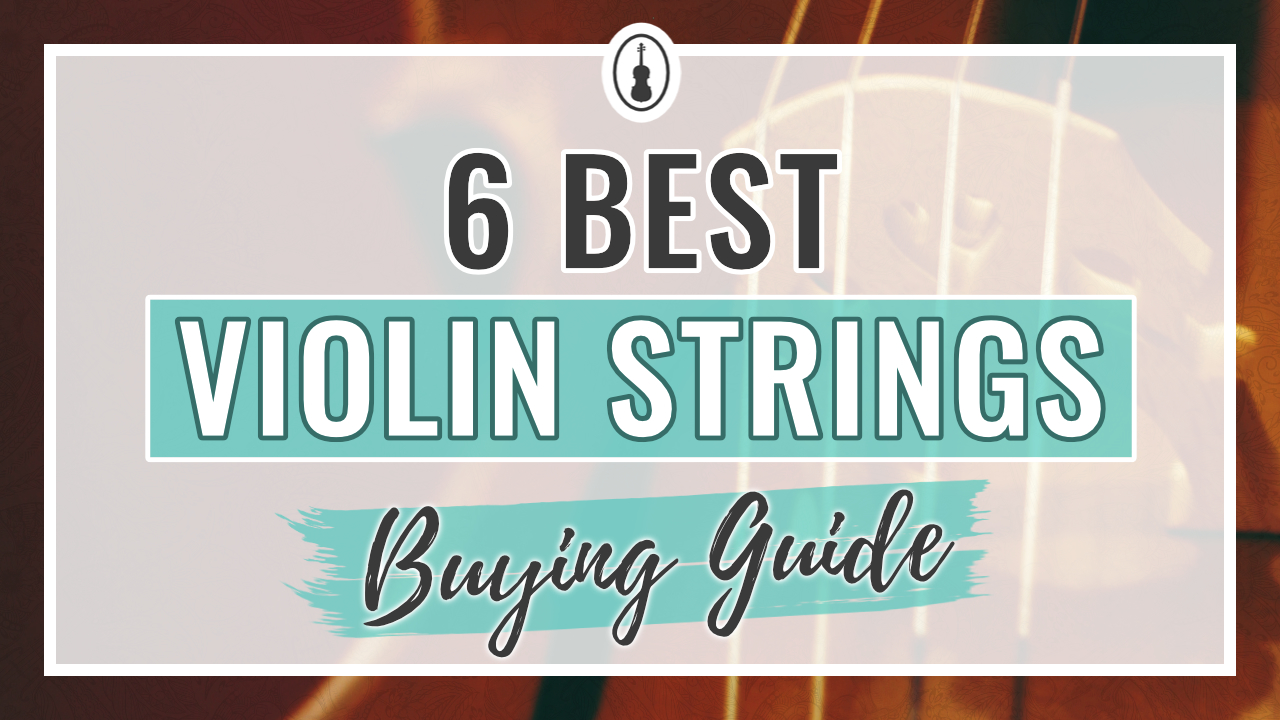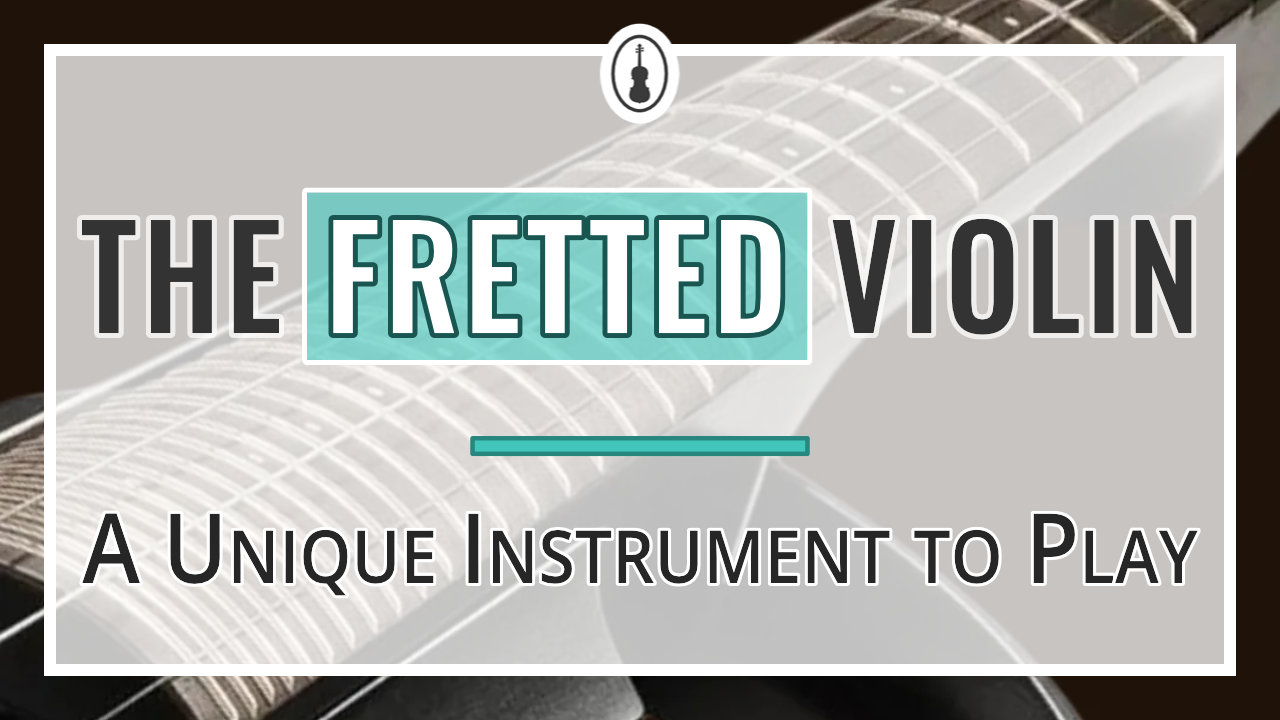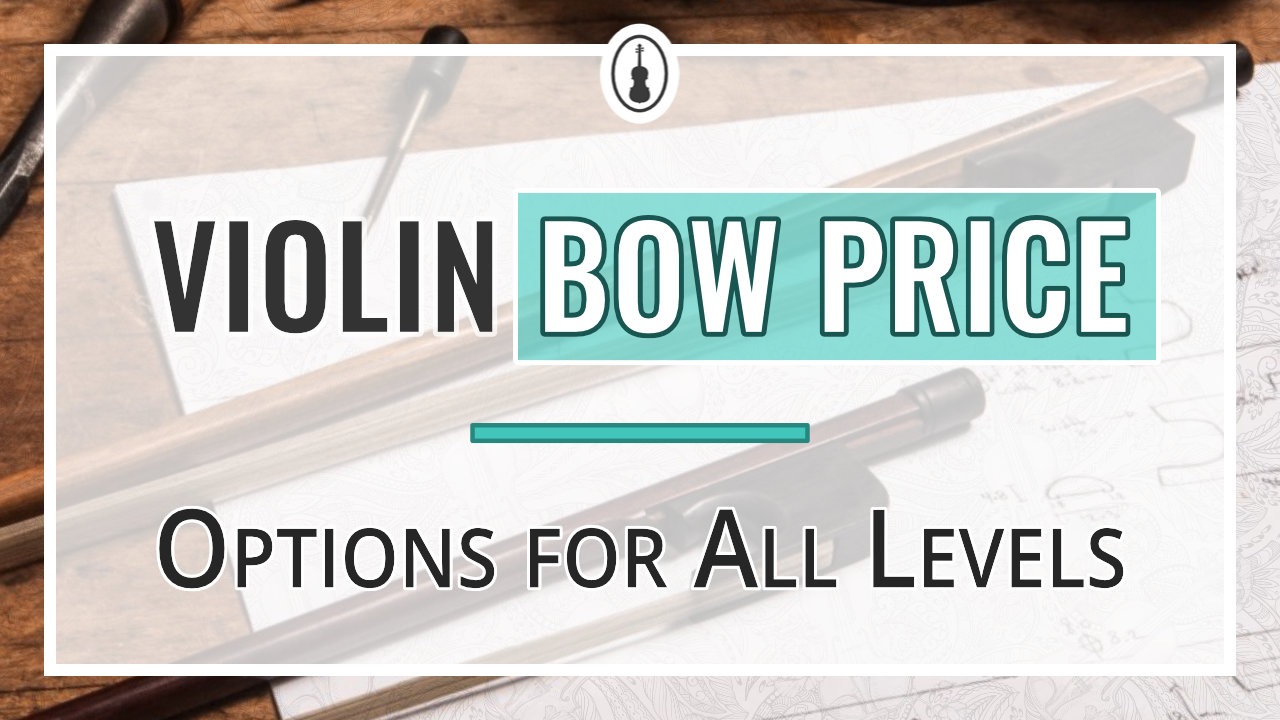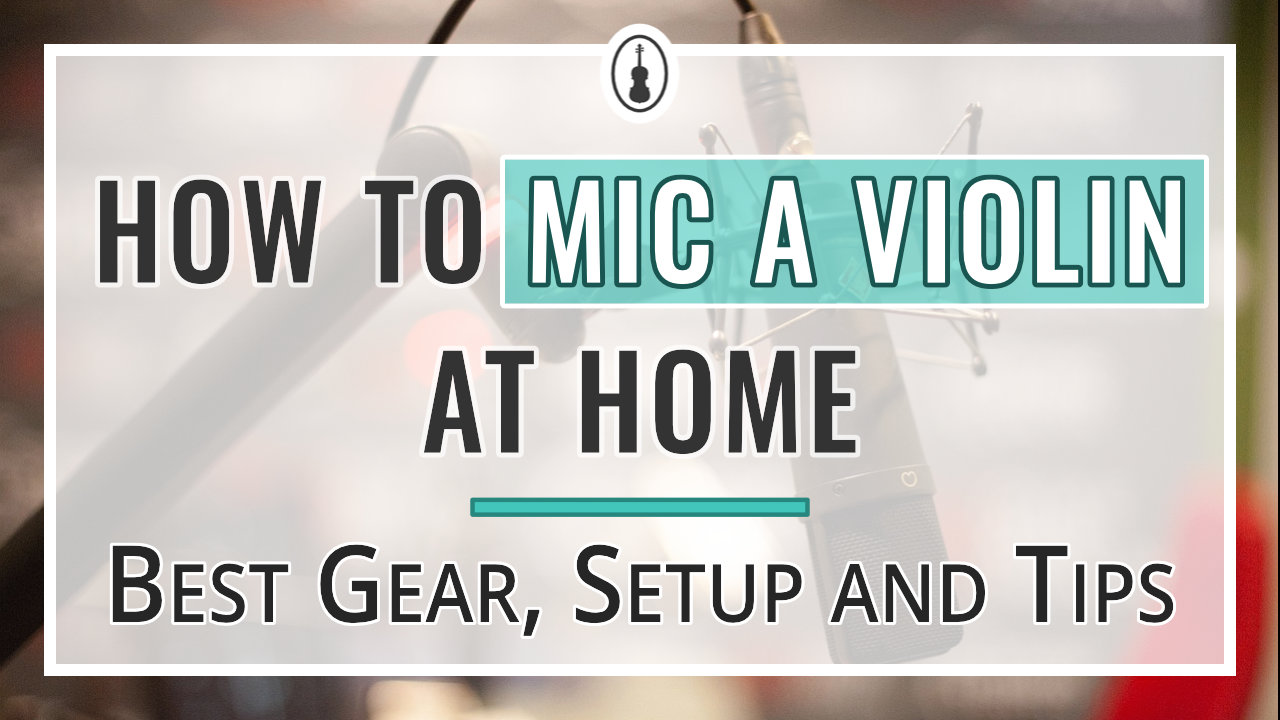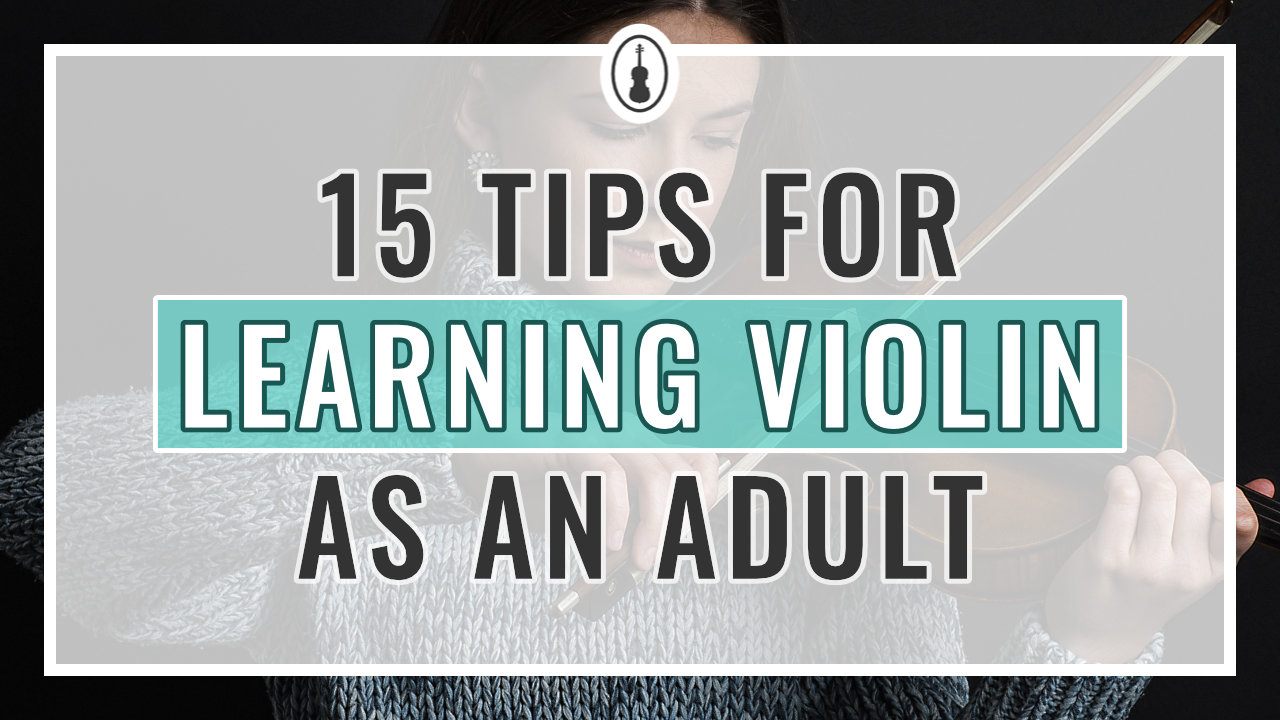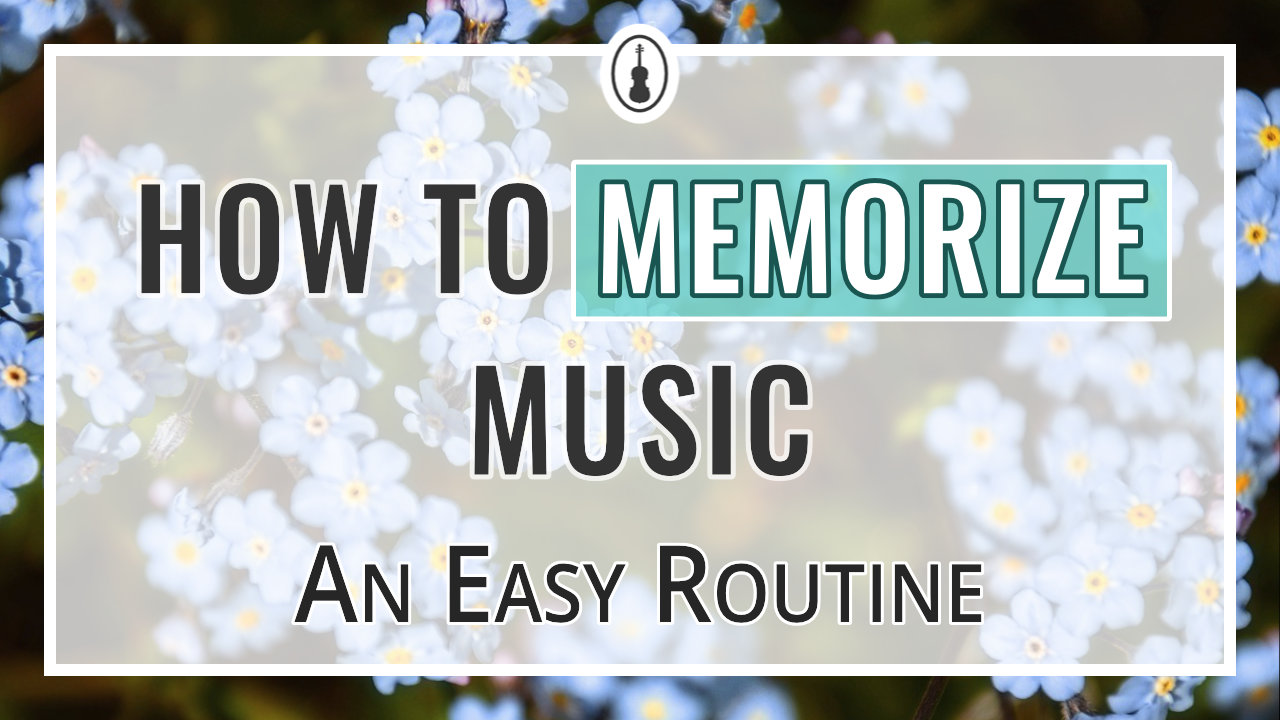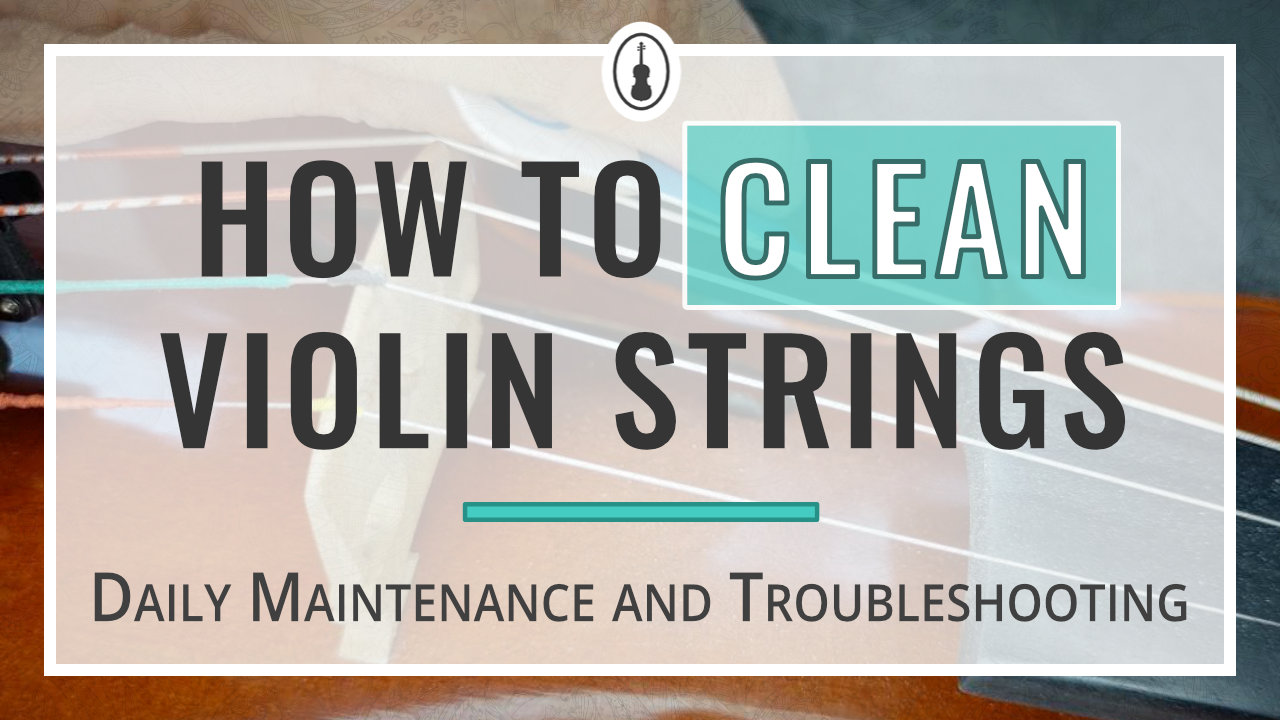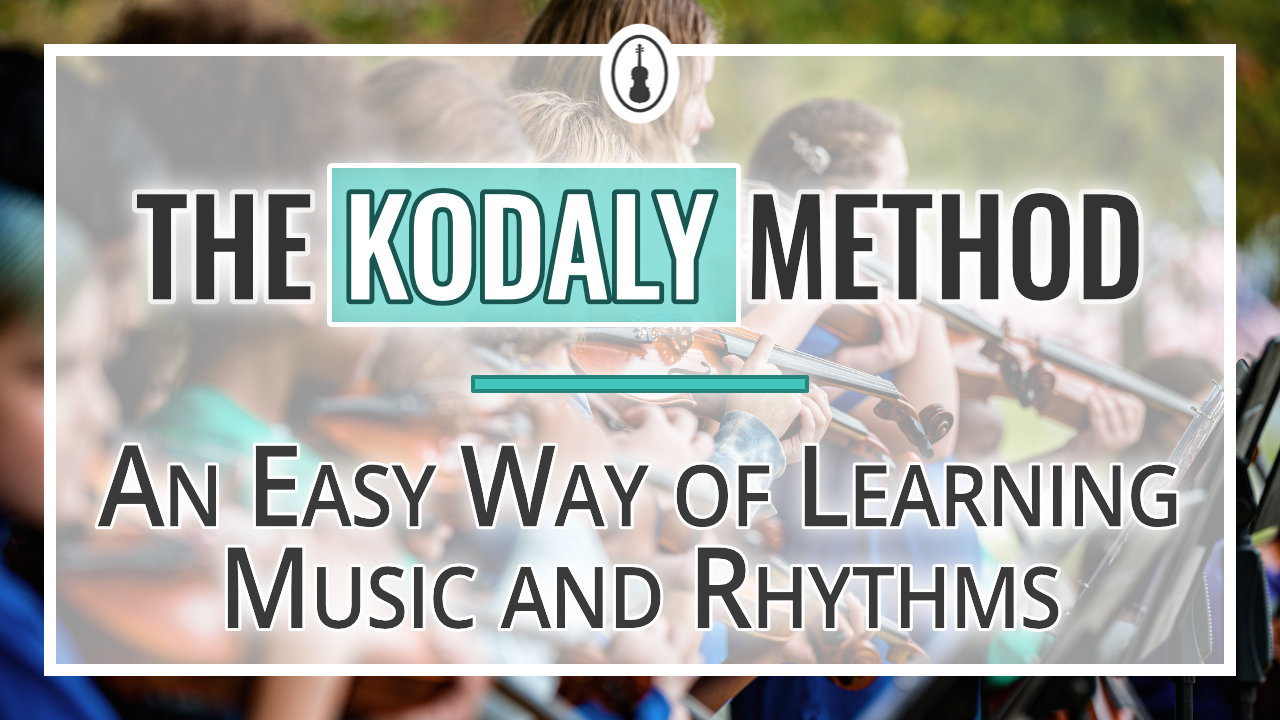Learn what are arpeggios and download a booklet with exercises!
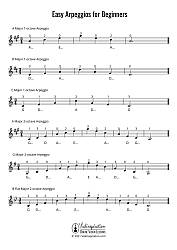
Arpeggios for Beginners
Get Free Easy Exercises
Arpeggios are common in music and can be played as an easy warm-up exercise. You might be wondering now: what is an arpeggio?, how and why would I want to practice it? I hope this article will answer all your question on that matter.
An arpeggio is a type of broken chord which uses notes from scales. Because the arpeggio does not use all of the notes, the fingers leap around, up or down, and create a chord-like sound on the violin. Once you understand how to play one arpeggio, you will understand how to play all arpeggios. Let’s get started!
What Does the Term Arpeggio Mean?
The word Arpeggio comes from the Italian word Arpeggiare which means “to play the harp.” The musical term arpeggio means to play or sing notes of a three-note chord one after another (not simultaneously) with ascending or descending order. An arpeggio can be played or sung over one or more octaves.
Arpeggio in Musical Notation
Arpeggios can be notated in the sheet music as separate notes or as a chord with a wave on the left side of the notes. Sometimes, it is specified in which direction a player should play the arpeggio. Then, it is notated as a wave with a small arrow pointing up or down.
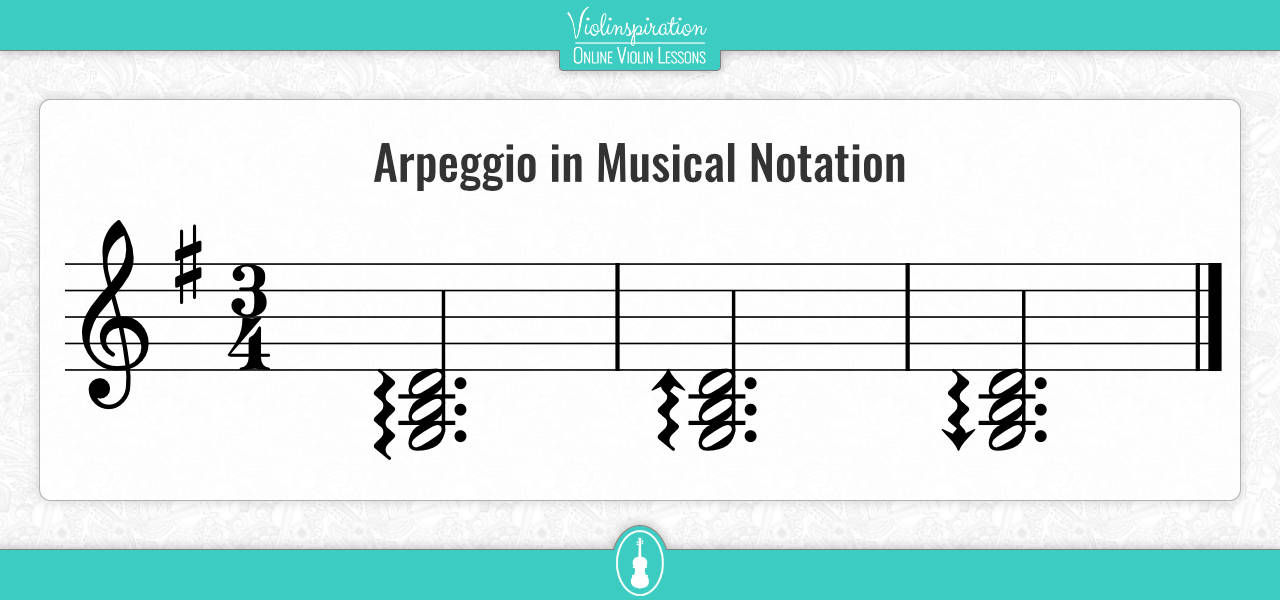
What Are Arpeggios Used for?
Arpeggios are used by string players for developing intonation and technique. Arpeggios are used in specific genres like Flamenco or neo-classical. They are also common in electronic music, jazz improvisation, ear training, and video game music in the 1980s.
Arpeggios can often be found played by the violin, the guitar, the piano, or any other instrument. In fact, playing arpeggios is a part of the scale-playing foundation which all musicians learn at some point.
When playing arpeggios on the violin, it sounds very similar to how it’s played on the guitar and the harp. On the piano, arpeggios are the notes which make up their basic chords. They can be played as individual notes in a pattern, which is an arpeggio, but when the individual notes of the arpeggio are played together, they create chords.
What Is the Difference Between Scales and Arpeggios?
The difference between scales and arpeggios is that arpeggios use only some notes from a given scale and scales use all notes within an octave. To play a one-octave arpeggio means to play 4 notes and to play one-octave scale means to play 8 notes.
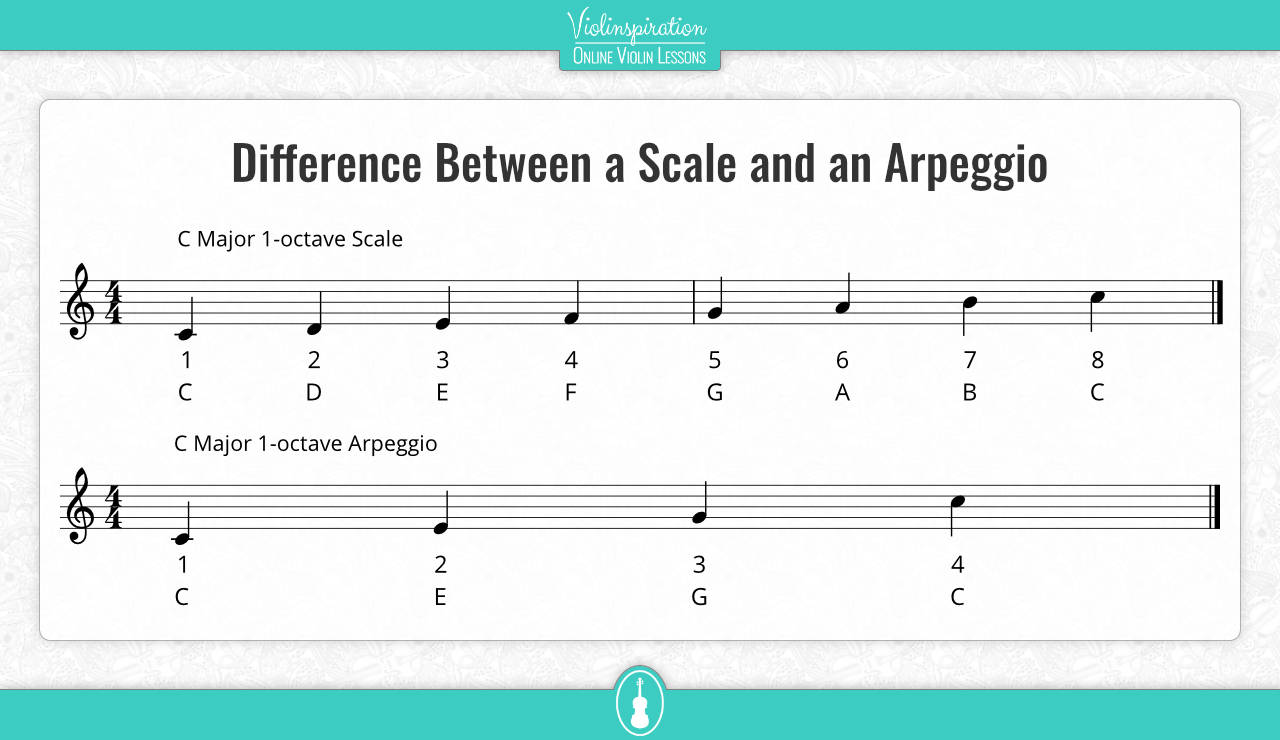
Both scales and arpeggios can be ascending (rising) or descending (falling) but the notes of a scale take exactly one step up or down compared with an arpeggio which leaps around, leaving some notes out.
The Triad – Construction of an Arpeggio
The scale is a complete set of notes within an octave of a key. An arpeggio is an incomplete set of notes made up of the first, third, fifth, and last note (which is the same as the first note but one octave higher). A triad is comprised of the same notes of an arpeggio, and it is just a term that helps us understand the makeup of an arpeggio.
A scale is comprised of seven individual notes that follow each other in sequential order. The eights note we usually also play is the same as the first but one octave higher, or lower if played in descending order. For example, in the key of C major the seven notes within the scale are:
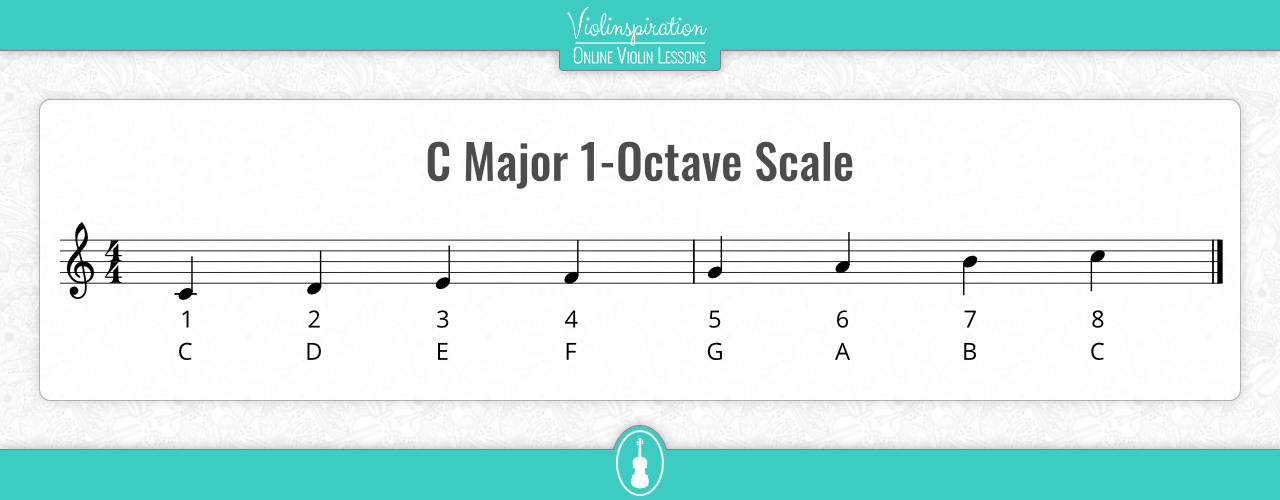
An arpeggio skips over some of the notes. For example, the notes that make up a C major arpeggio are:
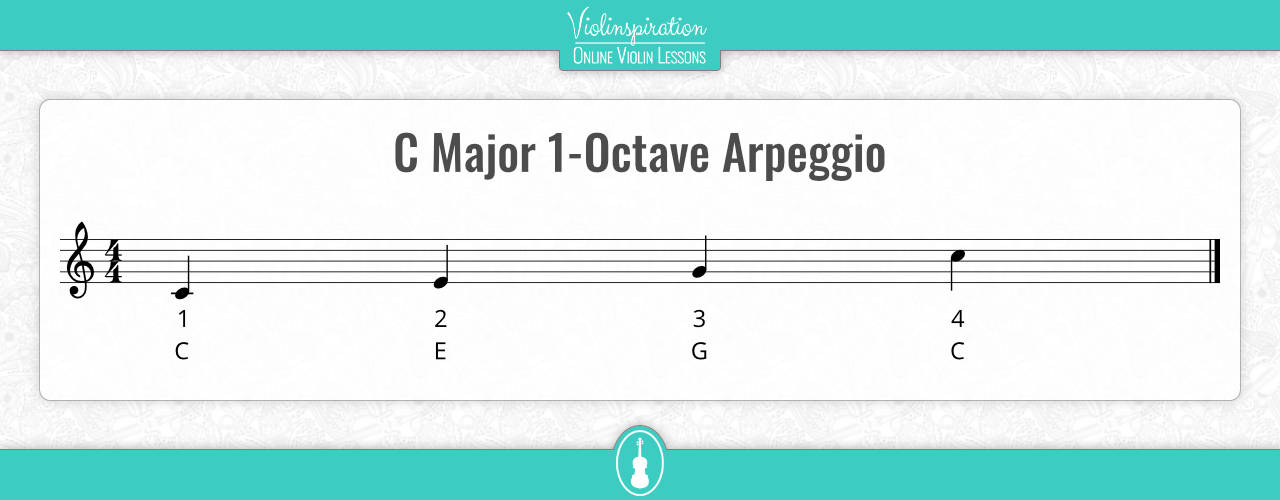
Sometimes called “broken chords”, an arpeggio derives from a scale and is built on the three most important notes of a scale. These notes are known as “the triad.” The triad is a term that describes the functions of the three individual notes of an arpeggio.
The three notes and their functions within a triad are:
The first note: the root
The Root of an arpeggio is the starting point of the key, the very first note of that particular chord. This is the “home” of the arpeggio.
The second note: the third
The Third in an arpeggio is the middle note of the broken chord, the same as the third note in a corresponding scale. It can be major or minor. Keep in mind that the third is the only note in the triad that varies. If the third is flattened, the triad becomes minor. If the third is unaltered, the triad is major.
The third note: the fifth
The Fifth of an arpeggio is the fifth note of the scale. A perfect fifth (seven semitones) is, in fact, the most often used interval (distance between notes) in Western music.
Combined together, these three notes form a chord, and from the chord played simultaneously, we can hear the sound of a complete harmony!
Understanding the triad with your violin
First, get the violin and bow into your hands. Play the open G and the open D together. The bottom note (G) is the root and the top note (D) is the fifth.
To complete the triad you will just need to play one note in the middle that is B natural. It’s the third. To play it, use the high second finger on the G string.
This way you played the notes that form the triad for the G major arpeggio. To get a better effect, play them in the sequence, from lowest to the highest, so G, B, and D. Does it sound nice to you?

You can try the same exercise with the open D and open A, this would mean the D is the root, the A the fifth, and the F# is the third.
If you tried this same exercise on the open A and E strings, could you tell me the three parts of the triad?
Practice Arpeggios on the Violin
To practice arpeggios on the violin you basically need to know the three notes of a chord, the triad. First, identify the notes of the triad. Next, play the triad in ascending order. Add one note that is one active higher than the root of the triad. Now, play the triad in descending order. That’s the “recipe” for playing a one-octave arpeggio. You can use it in any key signature to play arpeggios!
Let’s play together an arpeggio from the key of the G major.
G Major Arpeggio
Begin by playing your open G string, which is the root note of the G major arpeggio. The next note is B natural, so place your second finger on the G string. Use a full bow and try to play the notes legato. Similarly, play the open D string and then G by placing the third finger on the D string. Immediately after that, still using a full bow, play the open D string once again. Continue by playing high second finger on the G string, and then just the open string.
The time signature I use for notating arpeggios is 3/4, which means playing three quarter notes per bar. For this reason, the last note of an arpeggio should be longer to fill the whole bar. For example, if you use the metronome and you will play one quarter note per each click, the last note should last for three clicks.
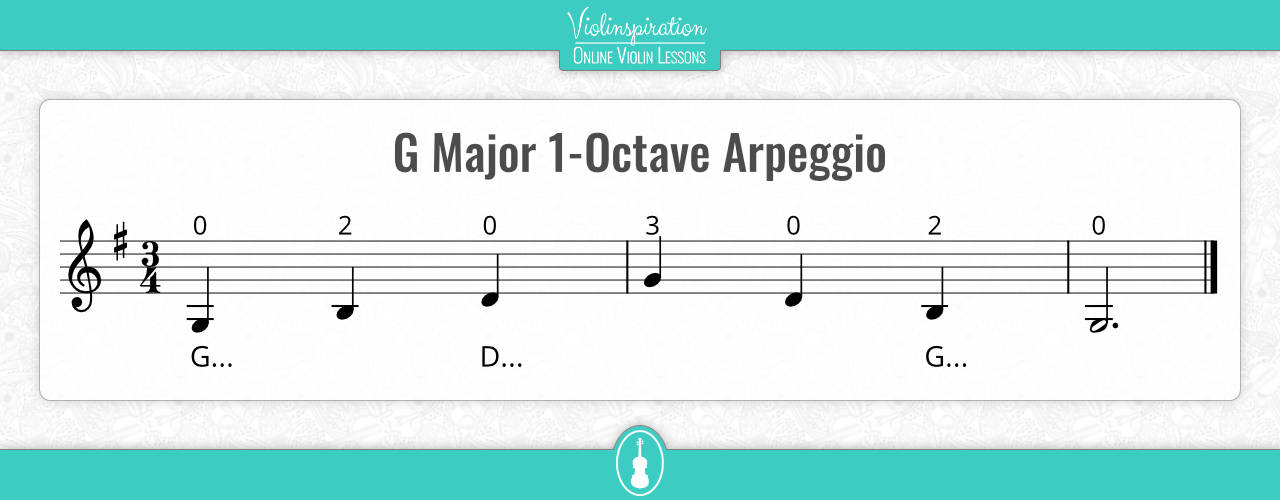
You can practice arpeggios going up or down, so you can repeat this process backward. Start with the note G on the D string, then play open D, followed by B natural (high second finger), and play the open G string once before you repeat the open D string and G with the third finger.
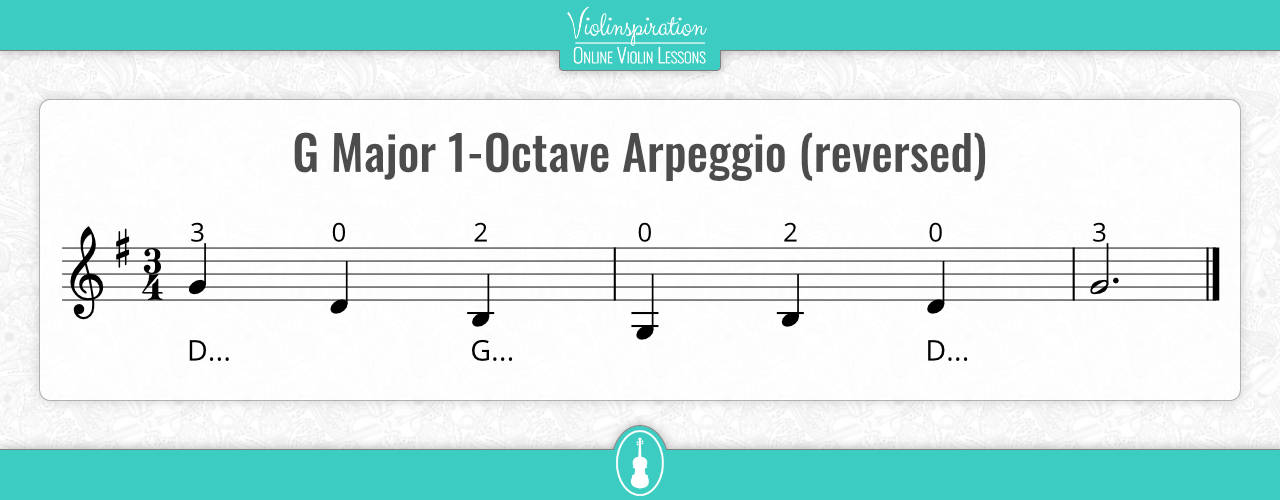
Also, you can try slurs when practicing arpeggios. Try to play three notes on each bow stroke, except for the last elongated note.
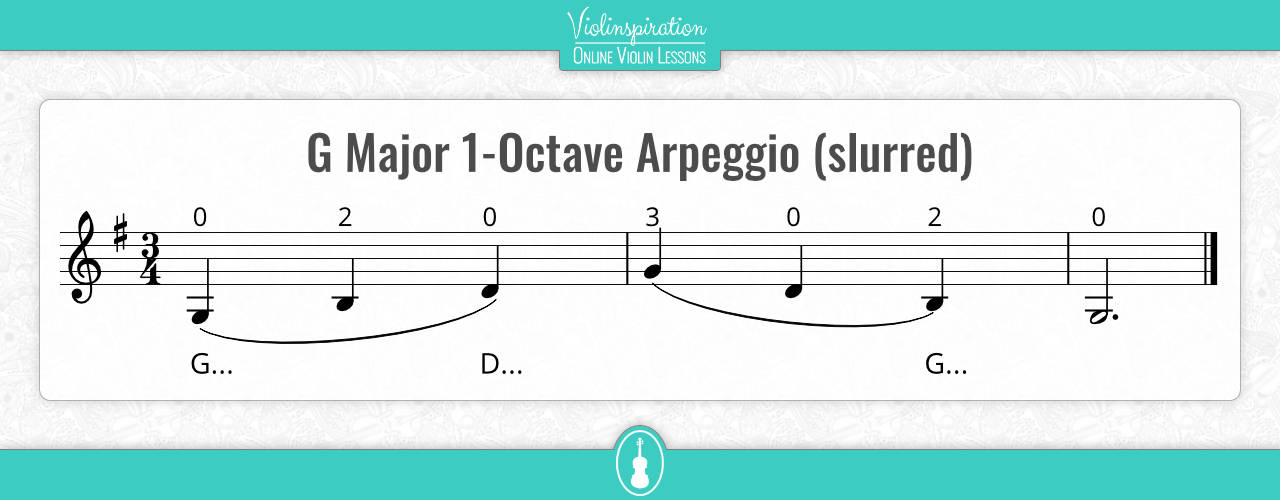
Violin Arpeggios Sheet Music
Here you can download for free a booklet with a set of the easiest arpeggios:

Arpeggios for Beginners
Get Free Easy Exercises
I recommend you practice the 1-octave arpeggios first. Then, when you feel more comfortable, try playing the 2-octave arpeggios. Do you hear how beautifully the arpeggios sound?
Make sure to print it out and put it on your music stand. This way you will remember about including them in your daily practice!

